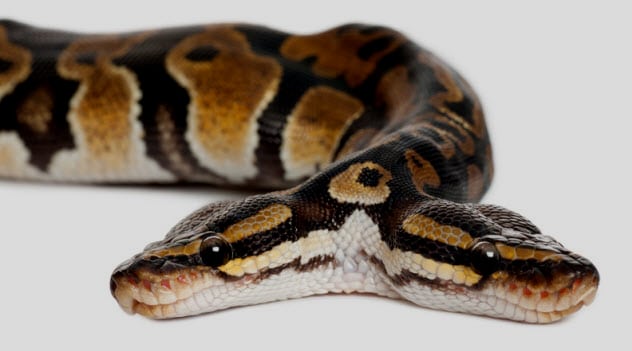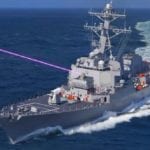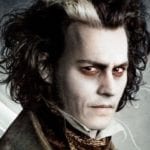 Music
Music  Music
Music  History
History 10 Less Than Jolly Events That Occurred on December 25
 Weird Stuff
Weird Stuff 10 Funny Ways That Researchers Overthink Christmas
 Politics
Politics 10 Political Scandals That Sent Crowds Into the Streets
 Weird Stuff
Weird Stuff Ten Bizarre Facts About The Doge Meme
 Our World
Our World 10 Ways Your Christmas Tree Is More Lit Than You Think
 Movies and TV
Movies and TV The 10 Coolest Stars to Set Sail on The Love Boat
 History
History 10 Things You Didn’t Know About the American National Anthem
 Technology
Technology Top 10 Everyday Tech Buzzwords That Hide a Darker Past
 Humans
Humans 10 Everyday Human Behaviors That Are Actually Survival Instincts
 Music
Music 10 Surprising Origin Stories of Your Favorite Holiday Songs
 History
History 10 Less Than Jolly Events That Occurred on December 25
 Weird Stuff
Weird Stuff 10 Funny Ways That Researchers Overthink Christmas
Who's Behind Listverse?

Jamie Frater
Head Editor
Jamie founded Listverse due to an insatiable desire to share fascinating, obscure, and bizarre facts. He has been a guest speaker on numerous national radio and television stations and is a five time published author.
More About Us Politics
Politics 10 Political Scandals That Sent Crowds Into the Streets
 Weird Stuff
Weird Stuff Ten Bizarre Facts About The Doge Meme
 Our World
Our World 10 Ways Your Christmas Tree Is More Lit Than You Think
 Movies and TV
Movies and TV The 10 Coolest Stars to Set Sail on The Love Boat
 History
History 10 Things You Didn’t Know About the American National Anthem
 Technology
Technology Top 10 Everyday Tech Buzzwords That Hide a Darker Past
 Humans
Humans 10 Everyday Human Behaviors That Are Actually Survival Instincts
10 Mythological Creatures That Really Existed (Sort Of)
The ancient Greeks had a thirst for mythological monsters. This obsession spread throughout the world and continues to the present day. However, many of the creatures were inspired not by the imagination but by science and nature.
It has been discovered that the sites of the ancient myths were often places where large numbers of fossils were discovered. In trying to make sense of what they were seeing, many myths were born. Here, we look at 10 mythological creatures from ancient Greece and around the world which may have had their origins in fact.
10 Cyclops

In Greek mythology, the Cyclopes (plural of Cyclops) were gigantic creatures with a single eye in the center of each of their heads. They were known chiefly for their barbarity, afraid neither of men nor gods.
The most famous Cyclops was Polyphemus, which attacked Odysseus in a cave and ate half of his men. Odysseus blinded the Cyclops by running a wooden stake through its single eye. Then Odysseus and his men escaped by tying themselves to the undersides of sheep.
This might sound implausible. But for a time, there appeared to be some fairly solid proof of the existence of Cyclopes. Many skulls were found with a single eye socket in the center of the head.
It turns out that the skulls belonged to dwarf elephants. The “eye socket” was the central nasal cavity and the opening for the elephant’s trunk. Many dwarf elephant skulls have been found in Cyprus, especially in caves where the Cyclopes were supposed to have lived. Therefore, it is perhaps natural that an elephant skull would have been taken as evidence of a race of giant, man-eating creatures with one eye and terrible table manners.[1]
9 The Kraken

Release the kraken! Originating in Nordic folklore, the kraken was said to be powerful enough to drag a ship to the depths by wrapping its gigantic tentacles around the vessel or by swimming in circles around it to create a maelstrom that would drag the ship down.
The first written account of the kraken dates back to 1180, and there were many accounts of a gigantic tentacled sea monster dragging ships to their doom. The kraken was said to be able to devour an entire ship’s crew in a single mouthful.
The kraken myth is likely to have arisen after sightings of a species of the giant squid (Architeuthis dux), which can grow to around 18 meters (59 ft) long, or possibly the colossal squid (Mesonychoteuthis hamiltoni), which is significantly larger than the giant squid and can grow to unknown lengths.[2]
Very few colossal squid have ever been found intact as they live in the deep waters of the Antarctic. For this reason, it has proved very difficult to find evidence of how squid attack their prey. Some recent research does show that they encircle prey with their tentacles before pulling it to them and eating it. So, you never know.
8 The Duck-Billed Platypus

Although it’s a more recent story than some of the others, the duck-billed platypus was once considered a mythological animal. But it is completely real, if a little weird-looking.
First discovered in the 18th century, it was considered by many to be a ridiculous hoax and not without reason. This was an age when naturalists were creating all sorts of strange creatures with the help of taxidermy and creative imaginations.
For example, Albertus Seba had a whole cabinet of curiosities. Some were real, and some were not. For instance, the seven-headed hydra turned out to be a sackful of snakes sewn onto the body of a weasel.
The platypus looks just as implausible. In 1799, English zoologist George Shaw wrote that it resembled “the beak of a duck engrafted on the head of a quadruped.”
The platypus is remarkable for many reasons, not just its peculiar appearance. Naturalists could not determine whether the creature was a mammal. Did it lay eggs or give birth to live babies? It took another 100 years for scientists to discover the answer to that. The platypus is one of the very few mammal species to lay eggs.[3]
7 Mermaids

There have been legends of mermaids almost as long as people have sailed the seas. One of the earliest recorded tales of mermaids was that of Thessalonike. She was said to be the half-sister of Alexander the Great. After going on a danger-filled quest to discover the Fountain of Youth, he rinsed his sister’s hair in the immortal water.
When Alexander died, his sister (who may also have been his lover) tried to drown herself in the sea. But she couldn’t die, so she became a mermaid instead. Legend had it that she would call out to sailors, “Is Alexander the king alive?” If they replied, “He lives and reigns and conquers the world,” she would allow them to sail away. But if they said he was dead, she would transform into a monster and drag the ship to the bottom of the ocean.
One possible explanation for the persistence of mermaid sightings is that sailors were mistaking a mermaid, a fabulous creature with the body of a fish but the head and torso of a beautiful woman, with a manatee (aka a sea cow). It is fair to say that the manatee is not the most attractive-looking creature on Earth. So how could the sailors have made such a mistake?[4]
Well, manatees can hold their heads out of the water and turn them from side to side in the same way that a human can. And seen from behind, the rough skin might look like long hair. It is also known that sailors at sea for prolonged periods experience sailing hallucinations. So perhaps, if it was at a distance or in poor light, then they might mistake a manatee for a mermaid. Or perhaps it was the rum.
6 Vampires

The modern view of the vampire began with Bram Stoker’s novel Dracula (1897) and has changed very little since—a pale, thin stranger with an improbable accent who sleeps in a coffin and is more or less immortal.
It is well-known that Stoker based his character on the historical accounts of Vlad the Impaler. It is also possible that Stoker was inspired by the many rumors and superstitions surrounding death and burial at that time as well as ignorance about how the body decays.
After death, the skin of the corpse shrinks. So its teeth and fingernails become prominent and can appear to have grown. Also, as internal organs break down, “purge fluid” can leak out of the nose and mouth, leaving a dark stain. People may have interpreted this as the corpse drinking blood from the living.[5]
There was also the evidence from the coffin itself. Sometimes, scratch marks were found on the insides of the caskets, which was taken as evidence that the dead had become undead and arisen from their coffins.
Unfortunately, it is more likely that the undead became dead and that people who had fallen into a coma, for example, were buried in the mistaken belief that they had passed on. After recovering consciousness, they may have tried to free themselves.
It is believed that the philosopher and monk John Duns Scotus perished in such a way. His body was said to have been found in a crypt outside his coffin with his hands bloodied and bruised from trying to escape.
5 Giants

Giants have been part of folklore for thousands of years. In Greek mythology, we have the Gigantes, a tribe of 100 giants who were born of the goddess Gaia after she was impregnated from blood collected during the castration of Uranus. Yuck.
In Norse mythology, Aurgelmir was created from drops of water that formed when the land of ice (Niflheim) met the land of heat and fire (Muspelheim). He must have been quite big. After he was killed by the gods, the Earth was made from his flesh, the seas from his blood, the mountains from his bones, the stones from his teeth, the sky from his skull, and the clouds from his brain. His eyebrows even became the fence surrounding Midgard, which is the Viking way of saying Earth.
Hereditary gigantism might explain some of the beliefs in giants (though not the more outlandish ones). Scientists believe that they have isolated a gene that can lead to familial gigantism. According to researchers, people with gigantism can also have a tumor in their pituitary gland which can stimulate growth.
The biblical giant, Goliath, was said to have been over 274 centimeters (9’0″) tall. There is no modern definition of what height makes us a giant as different societies have different average heights, with as much as 30 centimeters (11.8 in) difference.
A study published in the Ulster Medical Journal suggested that Goliath, famously killed by David with a slingshot, had “an identifiable family tree suggestive of autosomal dominant inheritance.” The pebble used by David hit Goliath in the forehead. If Goliath had been suffering from a pituitary tumor pressing on his optic chiasm, he would have had visual disturbances which would have made it difficult for him to see the stone.[6]
4 Banshees

In Irish folklore, a banshee (meaning “woman of the fairies” in Gaelic) was a beautiful young woman with flowing white hair and eyes red from crying who “keened” to warn the person who hears it that someone in their family will die. Rather than being meant as a threat, it was supposed to give people time to say their goodbyes to their loved ones.
It is unclear when the legend first arose. There were reports of the banshee in Cathreim Thoirdhealbhaigh, a written history of the village of Torlough in 1350, and the accounts were still being told in the mid-19th century.
Keening was a traditional way for women to express their grief. They would gather together at the graveside and wail for their loss. This practice gradually died out during the 19th century after it became something of a tourist attraction to watch the keeners at a “real Irish funeral.”[7]
It is easy to see, however, why the romantic Irish, who were always ready to believe in the supernatural, would take the idea of a fairy woman and mix it with the sadness of women keening over their dead to create a beautiful banshee to call the family home to say their last goodbyes.
3 Hydra

In Greek mythology, the hydra was a gigantic sea serpent with nine heads, one of which was immortal. As one head was cut off, two more would grow out of the fresh wound.
Killing the hydra was one of the 12 labors of Hercules. To achieve this, he enlisted the help of his nephew, who cauterized the wounds as Hercules cut off the heads until only the immortal head remained. Hercules cut off that one, too, and buried it under a heavy rock.
The myth of the hydra may have been inspired by nature. There have been many documented cases of snakes with multiple heads (although nine would be pushing it). The incidence of polycephaly in reptiles appears to be higher than in any other species.
It has even been possible for scientists studying conjoined twins to create polycephalic animals. In the early 20th century, Hans Spemann tied young salamander embryos together with a strand of human baby hair to produce babies with two heads.[8]
2 Dire Wolves

These days, dire wolves are most known for their association with the Stark children on Game of Thrones. However, the dire wolf is not a figment of the GoT creators’ imaginations.
Much bigger than a modern wolf, the dire wolf lived in the Americas until its extinction about 10,000 years ago. Over 4,000 fossilized remains of dire wolves have been discovered at the La Brea Tar Pits in Los Angeles. It is believed that they may have become trapped while feeding on the carcasses of other ensnared animals.[9]
The dire wolf had a huge skull but a smaller brain than the modern wolf. Perhaps if the brains of dire wolves had been bigger, they would have realized that those animals were trapped in the tar pits for a reason. There is no evidence that an albino dire wolf ever existed, although albino cubs have been born in the modern wolf population.
1 Basilisks

According to Greek myth and Harry Potter, a basilisk (aka a cockatrice) was a serpent with a lethal gaze and terrible breath. It was said to have been born from an egg laid by a cockerel and hatched by a serpent.[10] Supposedly, it feared only the crowing of the cock and the weasel, which is immune to its venom (or Harry Potter’s sword). In Greek myth, the basilisk was of normal size, though it had grown to mammoth proportions by the time it got to Hogwarts.
While it is unlikely that a cockerel would ever lay an egg or that a serpent would choose to incubate it, the idea of a basilisk seems to have some basis in fact. It is probable that the basilisk of myth was actually an Egyptian cobra, a particularly dangerous snake which hisses continually and spits venom to a distance of 2.4 meters (8 ft) while aiming for the eyes of its enemy.
This may account for the myth that the basilisk killed those who looked it in the eye. The cobra’s greatest predator is the mongoose, which bears a strong resemblance to a weasel.
Alexander the Great was famously said to have used a mirror to defeat a basilisk. When the snake looked upon its own image, it died instantly. J.K. Rowling used a version of this story in her novels, too.
Ward Hazell is a writer who travels and an occasional travel writer.
Read about more fascinating mythological creatures on 10 Fascinating Mythological Creatures Of The British Isles and 10 Modern Encounters With Mythological Creatures.








